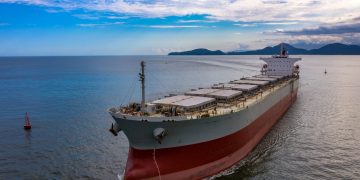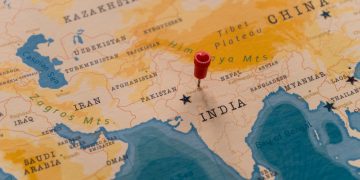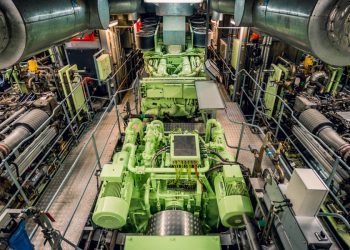Many topics discussed and decisions made during the MEPC 81 that took place from 18 to 22 March 2024, in IMO headquarters, London.
Following the event, Lloyd’s Register released a report, outlining the folllowing key outcomes:
- Adoption of amendments to MARPOL Annex VI concerning definitions of fuel oil and gas fuel and when the sampling requirements of MARPOL Annex VI regulation 14 do not apply to them, replacement of a steam engine and NOx compliance under MARPOL Annex VI regulation 13, and expansion of data required to be reported according to MARPOL Annex VI regulation 27 (expected to enter force 1 August 2025).
- Agreement to the reclassification of LNG carriers that are currently reported as gas carriers for the purpose of the data reporting in Annex VI regulation 27 and CII.
- Agreement to an illustration of future MARPOL Annex VI regulations to implement mid-term GHG measures and confirmation that the mid-term measures will include a fuel standard and an economic requirement.
- Approval of ECAs for SOx and NOx in the Norwegian Sea and Canadian Arctic (both expected to enter force 1 March 2026).
- Endorsement of a comprehensive list of instruments which require revision and or development as part of the review of the BWM Convention.
- Adoption of, with effect from 22 March 2024, MEPC.387(81) Interim guidance on the application of the BWM convention to ships operating in challenging water quality conditions. This guidance will assist ship owners and operators in planning for compliance with the BWM Convention and the D-2 discharge standard when a type-approved BWMS encounters operational limitations or meeting operational demand in challenging water quality (CWQ) conditions.
- Approval of, with effect from 22 March 2024, BWM.2/Circ.82 Guidance for the temporary storage of treated sewage and/or grey water in ballast water tanks. Noting that this procedure should only be undertaken temporarily in specific ports and areas which restrict the discharge of treated sewage and/or grey water (TS/GW) and where the ship does not have dedicated tanks with adequate storage capacity.
- Approval of, with effect from 22 March 2024, MEPC.1/Circ.909 Recommendations for the carriage of plastic pellets by sea in freight containers. This circular will act as a short-term measure with the aim of reducing the environmental risks associated with the carriage of plastic pellets in packaged form by sea ahead of mandatory instruments being developed.
How industry stakeholders reacted
Following the conclusion of the IMO MEPC81 Meeting on 22 March 2024, ICS released a statement to welcome the progress made during these intensive negotiations to achieve net zero emissions from shipping, and the support received from around 60 Member States for a flat rate contribution system per tonne of GHG. . The purpose of the proposed system, put forward by the International Chamber of Shipping (ICS), is to reduce the cost gap and incentivise the accelerated uptake of green marine fuels, as well as providing billions of dollars to support the maritime GHG reduction efforts of developing countries.
We have gained a better understanding of the concerns of those governments who still have questions about our proposed feebate mechanism. ICS will seek to address these concerns with all governments before the next round of IMO negotiations in September, to help ensure that the necessary regulatory framework can be adopted next year, for global implementation by 2027.
…ICS said.
As a co-sponsor, ICS was disappointed to see that the proposed resolution clarifying the current status of the Carbon Intensity Indicator (CII) rating system did not receive sufficient support from Member states.
However, we were heartened to see wide acknowledgement of the need to address the irregularities that have emerged. This heightened awareness is a positive outcome for the ongoing CII review as it is vital we have a workable system to ensure the industry reduces emissions.
Concluding, ICS said it trusts that all delegations can work towards an improved CII system that incentivises correct behaviours and fully aligns with the objectives of the 2023 IMO GHG Strategy.
In turn, Danish Shipping noted that oone of the main points on the agenda was the establishment of global, binding climate regulation of shipping and highlighted that it is vital all 175 member countries maintain the ambition for climate-neutral shipping around 2050.
“We have always known that negotiations to put global climate regulation of shipping in place would be a difficult and complex process, both technically and politically. The negotiations take place against a volatile geopolitical backdrop, where countries have vastly different starting points and interests” said Nina Porst, director of climate, environment, and safety at Danish Shipping.
It is also essential for promoting shipping companies’ investments in new green ships that work on climate regulation of shipping is progressing, Danish Shipping added with Nina Porst saying that:
“We are far from the goal, and difficult negotiations lie ahead. We have experienced small but sensible progress. The framework is set, and the process continues. Now, the framework must be filled with more detailed content.’‘
I remain optimistic and believe that we can achieve a good result and get the necessary regulation in place by 2025 at the latest
… Nina Porst, director of climate, environment, and safety at Danish Shipping commented.
MEPC 81 was an important opportunity for all parties to review and discuss the many
proposals on the table, agreed the Word Shipping Council (WSC).
The WSC Green Balance Mechanism, an innovative approach to GHG pricing designed to bridge the price gap between fossil fuels and green fuels, has been very positively received. The constructive input received both at the intersessional and MEPC meetings are invaluable as we further develop the mechanism.
…WSC further said, highlighting that as we all prepare for the MEPC 82 meeting in September, it is essential that the work on technical and financial measures is undertaken with a clear focus on how they will deliver on industry’s shared target of decarbonization.
In that regard, WSC highlighted that:
- A fuel standard must be carefully tailored to align with emission targets using a full lifecycle perspective, providing a clear pathway to ensure it drives meaningful change rather than locking in interim solutions.
- A financial measure, or GHG pricing mechanism, needs to bridge the price gap between fossil fuels and green fuels to enable their use in the world’s fleet and incentivize investment in green fuel production.
- Renewable fuel plants will only be built by energy providers if there is a clear demand for green fuels, and simply narrowing the price gap will not be enough to create a viable market.
”Although there has been growing support for a fuel levy, MEPC 81 has been a lost opportunity with respect to discussion of a global fuel standard and energy efficiency measures such as the review of the IMO’s Carbon Intensity Indicator (CII)’‘, further said the Clean Arctic Alliance.
The Clean Arctic Alliance welcomed IMO’s support for new Arctic Emission Control Areas for shipping, however it noted that frustratingly discussion of other air pollution including measures to control emissions of black carbon impacting the Arctic were kicked down the road to MEPC 82. Similarly, further discussion of the discharge of wastewater from the use of scrubbers used to circumvent the need to move to cleaner fuels, was also delayed to MEPC 82.
MEPC approves proposals for Emission Control Areas
MEPC approved two proposals for the designation of Emission Control Areas (ECAs):
- Proposed ECA in Canadian Arctic Waters, for Nitrogen Oxides, Sulphur Oxides and Particulate Matter; and
- Proposed ECA in the Norwegian Sea for Nitrogen Oxide and Sulphur Oxides which includes a “three dates criterion” consisting of building contract, keel laid and delivery date as part of the keel-laying date requirement in the proposed amendment to MARPOL Annex VI.
The draft amendments to MARPOL Annex VI to establish the ECAs will be forwarded to MEPC 82 for adoption. The earliest entry-into-force date of the amendments would be 1 March 2026 (16 months from adoption).
“The creation of these two new Emission Control Areas will set an important precedent for protection of our climate and our ocean, and particularly the Arctic”, said Dr Sian Prior, Lead Advisor to the Clean Arctic Alliance.
In particular, Dr. Prior said:
The creation of an ECA in Canadian Arctic waters will reduce polluting air emissions from ships, improve air quality for northern populations, deliver benefits to both marine and terrestrial habitats and wildlife and also contribute to a reduction in climate-forcing black carbon pollution in the Arctic
“The Norwegian Sea ECA will reduce impacts on human health and contribute to reduced deposition of nitrogen and sulphur along the Norwegian coast, including a 58% reduction in particulate matter, such as black carbon, by 2030 compared with 2020. Both ECAs will significantly reduce air pollution from ships in the Arctic.”, continued Dr. Prior.

































































